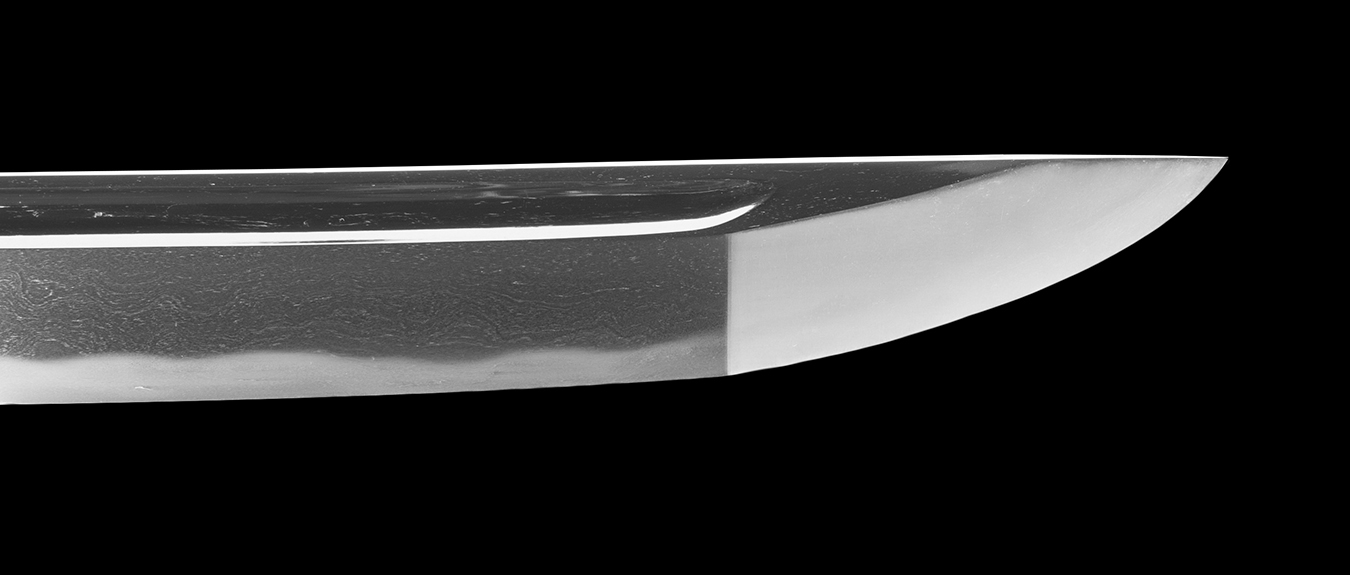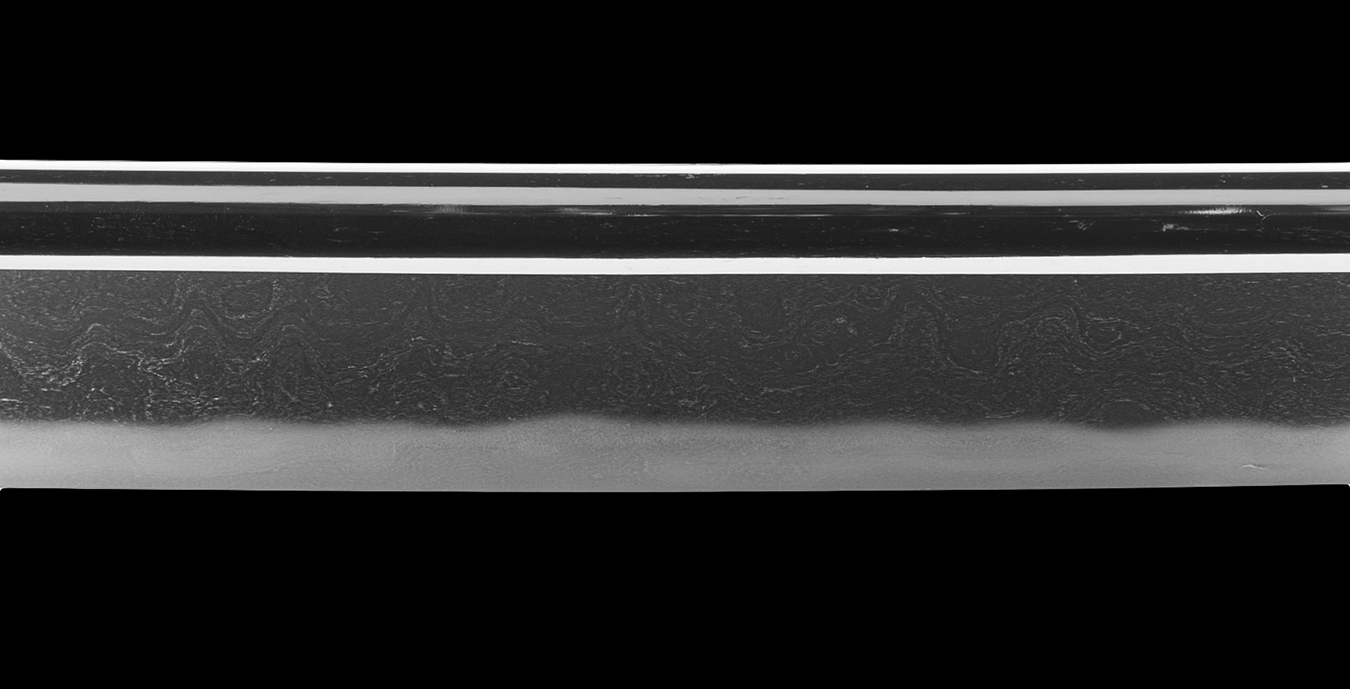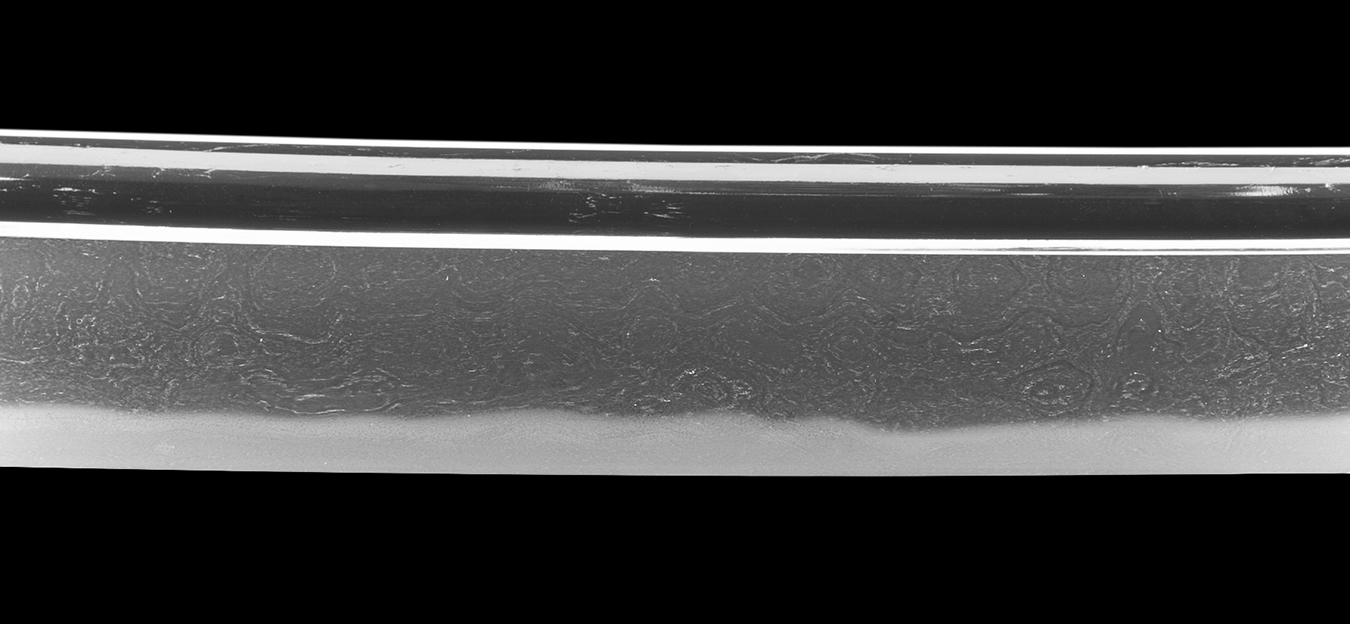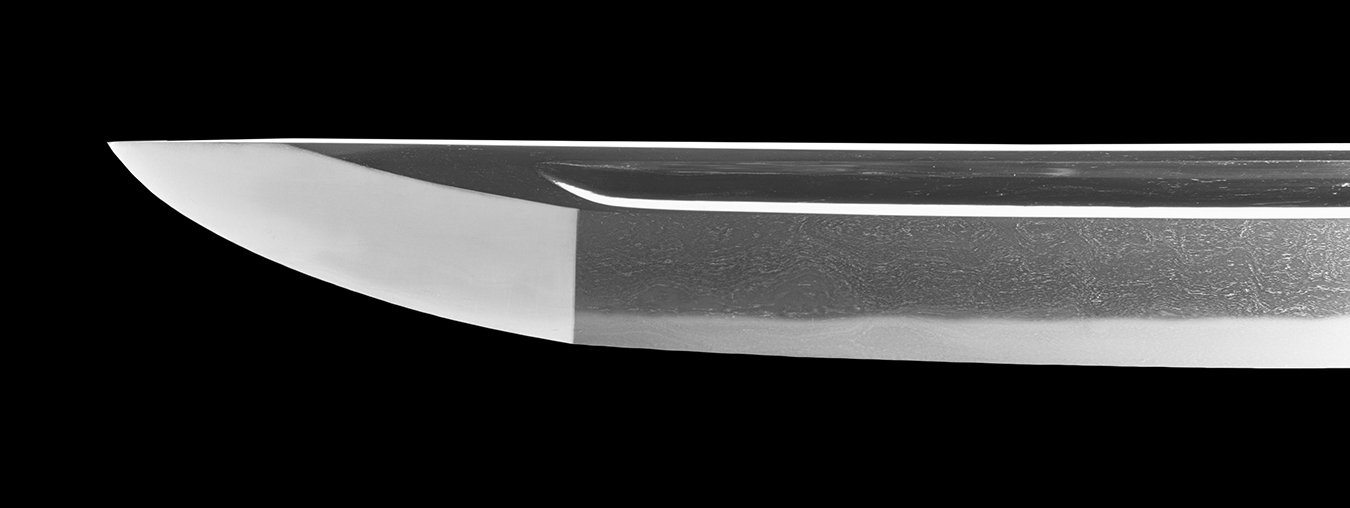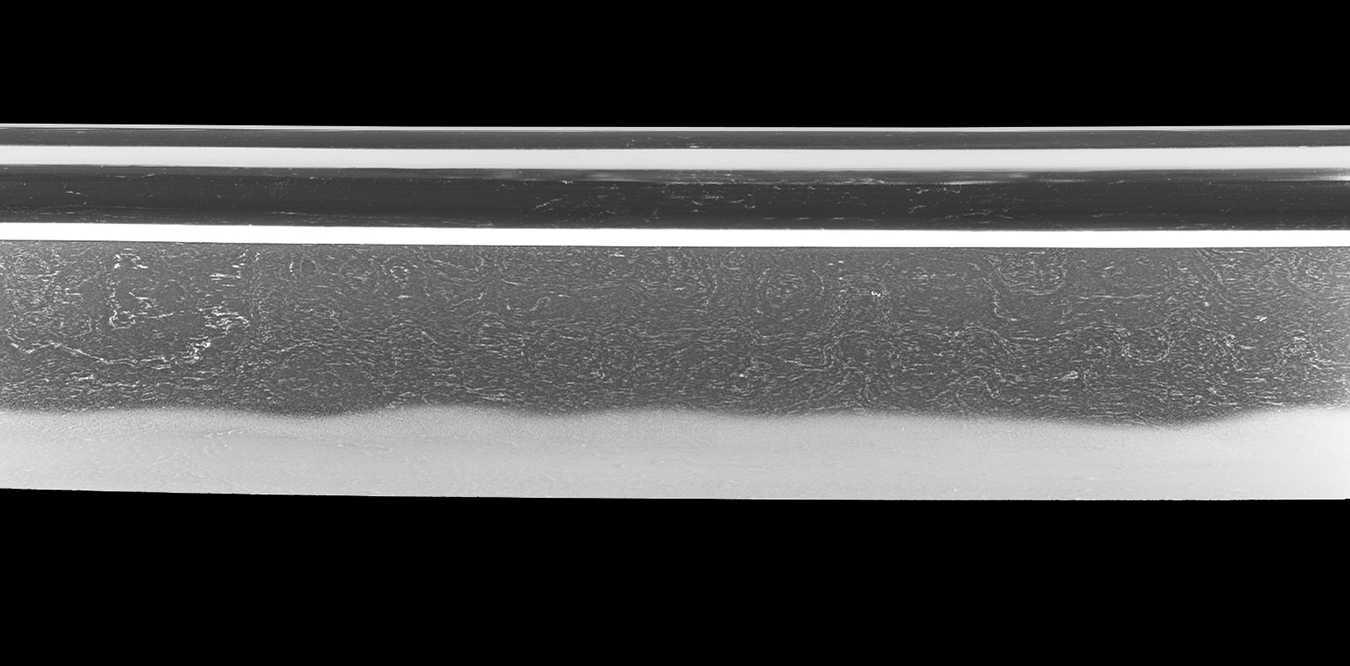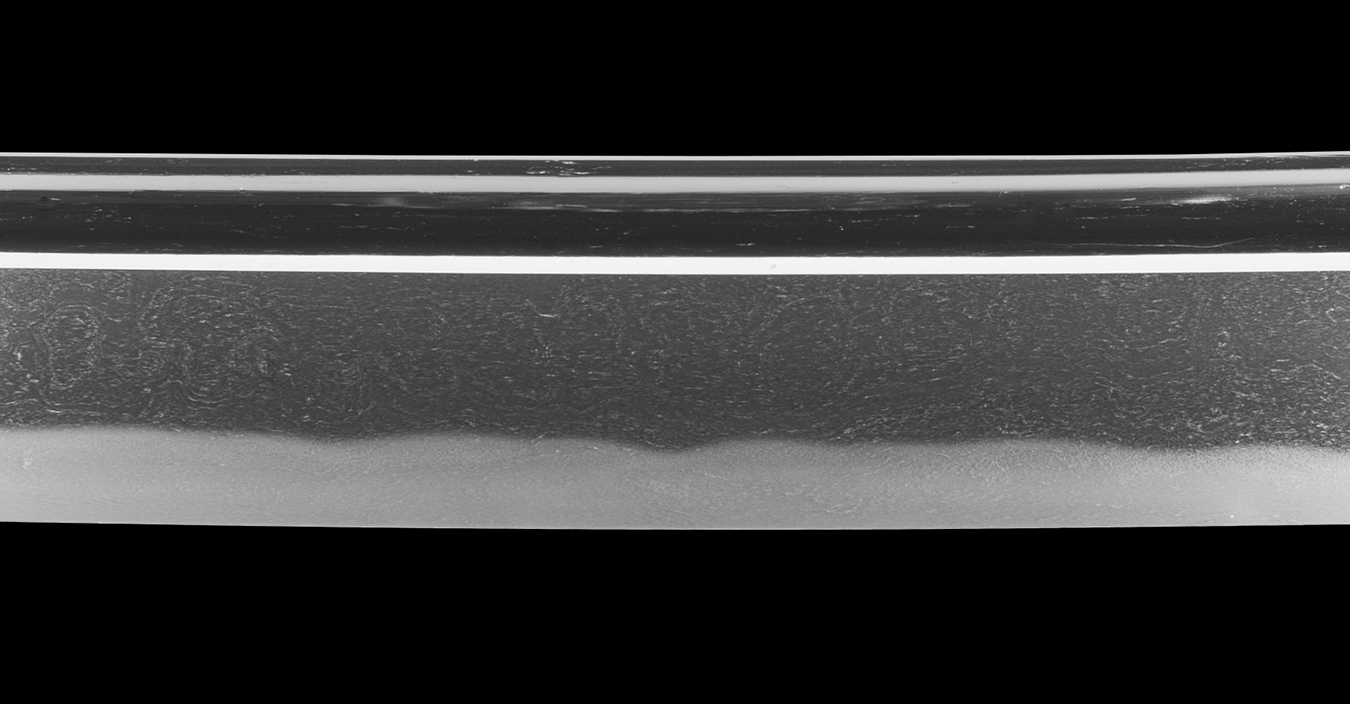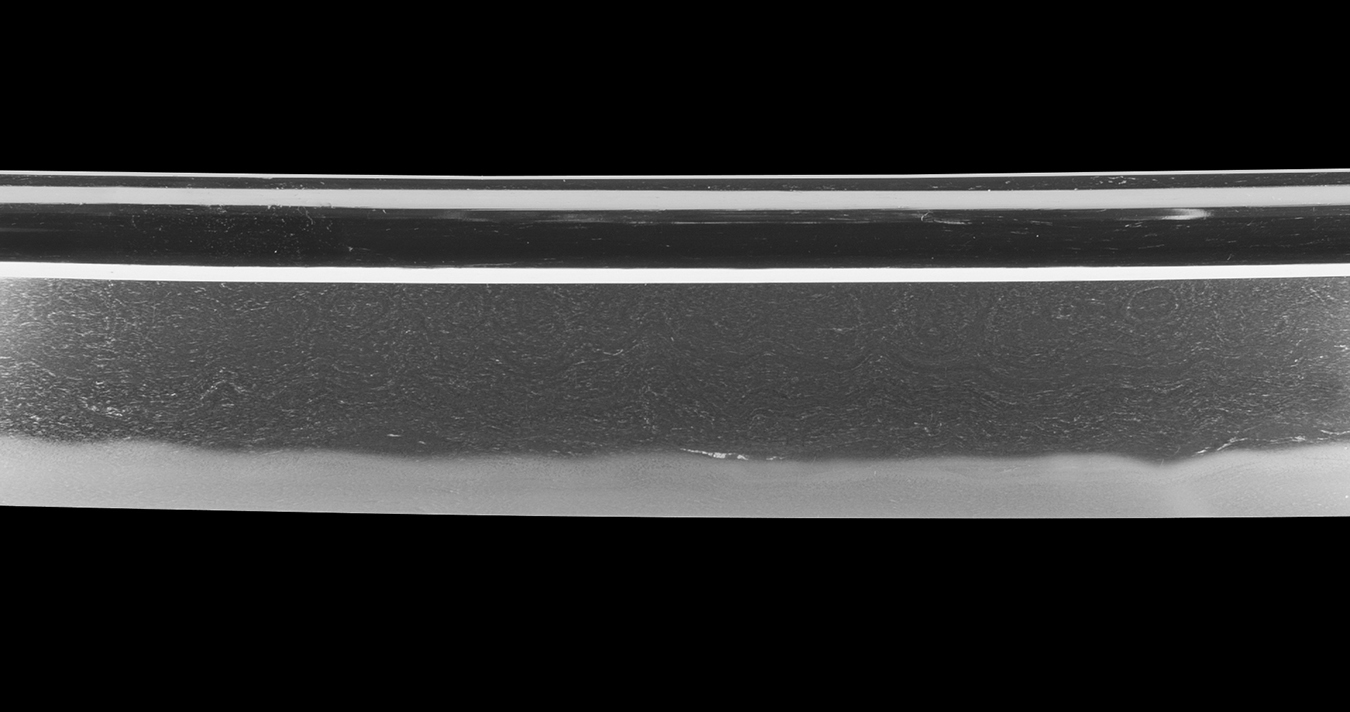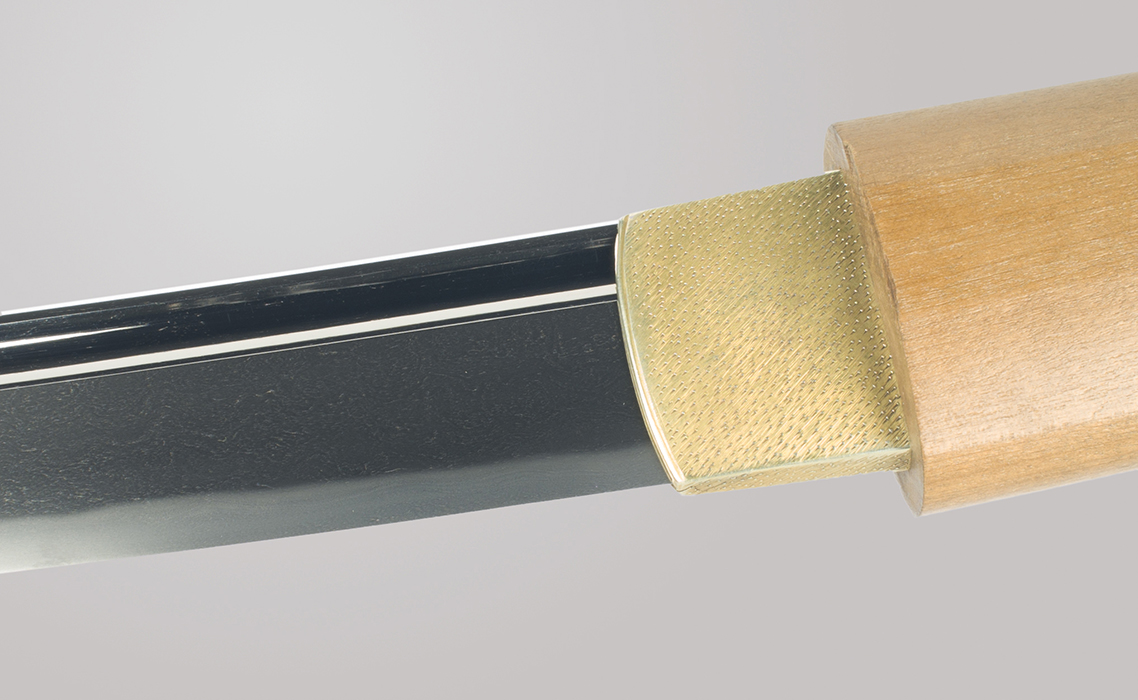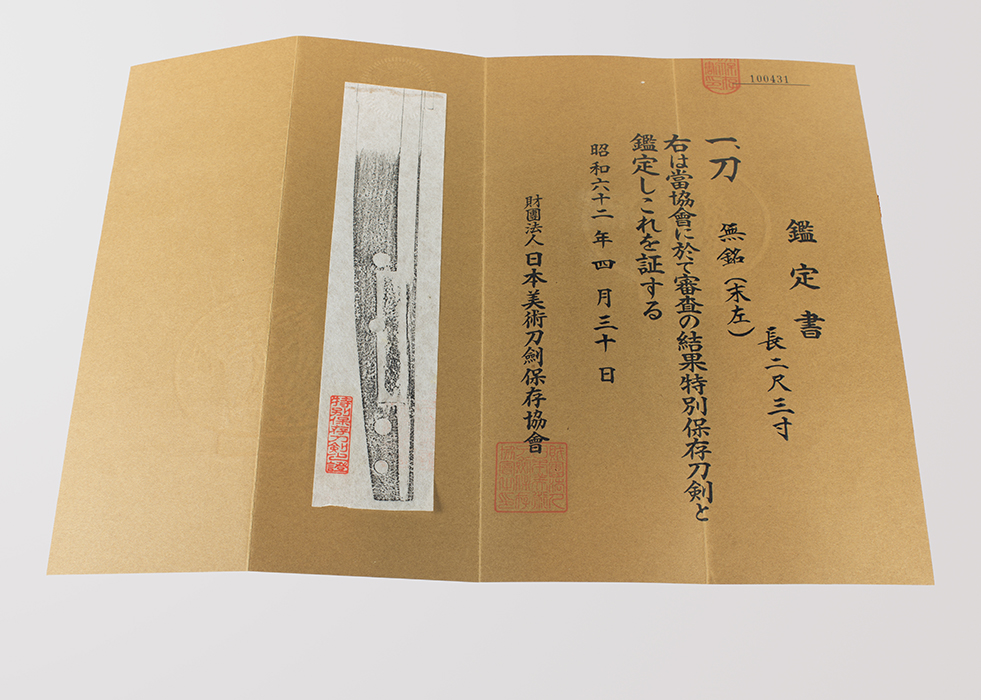|
| |||||||||||||||||||||||||||||||||||||||||||
Hamon : Ko-nie deki gunome midare. Many sunagashi, ko ashi and small kuchigai-ba formations are present. The nioi-guchi is well-controlled, being even in thickness and luminosity throughout the length of the blade.
Kitae : Hadatachi nagareru mokume. The distinct nenrin hada of the Sa school can be seen in several areas. This is a jigane pattern that appears similar to the annual rings of a tree. Ji-nie and chikei are especially abundant.
Boshi : Midare-komi with a kaeri reaching near the yokote and inazuma on both sides.
About this sword : This is an o-suriage mumei katana that has been attributed by the NBTHK to the Sue Sa school. The Sa school was active from the late Kamakura period through the mid-Muromachi period. The founder of this school was O Sa. He is counted as one of the ten students of Masamune and the Soshu style is strongly evident in the works of this school. The term of "Sue Sa" used by the NBTHK on this blade's paper means "later Sa". This term is used to identify works of the Sa school dating from the second half of the Nanbokucho jidai throughout the end of the school, around the mid-Muromachi period. This blade has received a Tokubetsu Hozon paper. This is important to note in terms of the age of this blade. As a rule, o-suriage mumei blades can only be awarded a Tokubetsu Hozon paper if they are Nanbokucho or older. When we see an occasional exception to this, explanation of jidai is given in parenthesis on the paper below the attribution. The attribution of this blade is simply "Sue Sa". Thus, at the Tokubetsu Hozn level we can know that the NBTHK is firmly placing the time of production at the Nanbokucho period at the latest.
The sugata of this blade shows clearly all of the traits of Nanbokucho times. Specifically, this is the blade's wide mihaba with only slight taper, imposing o-kissaki and we should note that this work is in josun length even after o-suriage. When this blade was ubu, it had a nagasa well over 32 inches. A classic example of the Sa School from around the mid-late Nanbokucho period. Nearly all of the Sa smiths active at this time are ranked at the Jo Jo Saku by Fujishiro. The attribution of Sue Sa at the Tokubetsu Hozon level speaks highly to the quality of the blade.
This blade is in high quality Japanese polish. The geometry is splendid and the hadori adheres to the nioi-guchi perfectly. There is one ware as shown in the photos. In celebrated works of this school, small lamination openings are normally more present. This blade has ubu bo-hi that go all the way through the nakago. There is also an old gakumei on the nakago that is unreadable.
A powerful and healthy Sa school katana of the Nanbokucho period. This comes with the 1987 Tokubetsu Hozon paper mentioned above, gold foil habaki, charming old shira-saya and a storage bag. A rare opportunity to own a Sa school katana from the Nanbokucho period.


